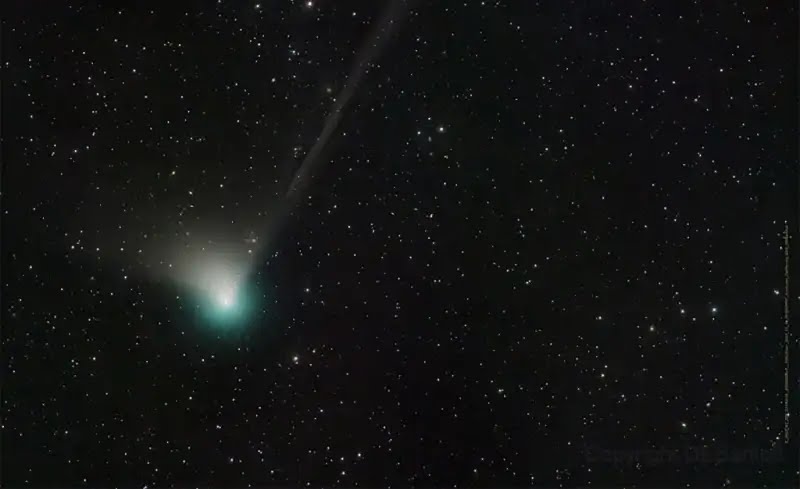In the upcoming weeks, a newly found comet may pass by Earth and the Sun for the first time in 50,000 years while being visible to the naked eye, according to astronomers.
The Zwicky Transient Facility, which first observed the comet past Jupiter in March of last year, gave it the name C/2022 E3 (ZTF).
It will arrive at the Sun’s closest point on January 12 and pass the Earth’s closest point on February 1 after leaving the frigid outer regions of our Solar System.
If the sky is not overly lit by city lights or the Moon, it should be simple to see with a good pair of binoculars and possibly even with the unaided eye.
Opus Of A Comet
A physics professor at the California Institute of Technology who works at the Zwicky Transient Facility, Thomas Prince, told AFP that the comet “will be brightest when it is closest to the Earth.”
According to Nicolas Biver, an astronomer at the Paris Observatory, the comet is made of ice and dust, has a greenish glow, and has an estimated diameter of about a kilometer (0.62 miles).
This makes it considerably smaller than Hale-Bopp, which raced by in 1997 with a potentially fatal diameter of about 60 kilometers, and NEOWISE, the last comet visible to the human eye, which passed Earth in March 2020.
Advent Of A “Fuller Moon”
Although it won’t be particularly huge, the most recent visit will be closer to Earth, which “may make up for the fact that it is not very massive,” Biver said.
While the comet will be at its brightest when it passes Earth in the first part of February, a fuller moon may make it more challenging to see it.
Biver recommended the last week of January for the Northern Hemisphere, when the comet will travel through the constellations of Ursa Minor and Ursa Major. He noted that the new moon on the weekend of January 21–22 presents an excellent opportunity for stargazers.
Genesis Of The Comet
Additionally, Biver said, “the object might be twice as bright as anticipated, which would be a great surprise for us. On February 10, when it passes near the sun, there will be a second chance, according to Prince, to spot the comet in the sky.
“Rare visitor” According to Prince, the comet has spent most of its life at a distance from the Sun that is “at least 2,500 times farther distant than the Earth is from the Sun.”
Nursing Of Home To Frozen Particles
The Oort Cloud, a theoretically enormous sphere around the Solar System that is home to enigmatic frozen particles, is thought to have produced the comet, according to Biver. The last comet to pass Earth was in the Upper Paleolithic, when Neanderthals were still living on the planet.
The comet’s next trip to the inner Solar System is anticipated in 50,000 years, according to Prince. However, according to Biver, it’s possible that following this stop, the comet will be “permanently ejected from the Solar System.”
Conclusion
The James Webb Space Telescope will be among those keeping a careful eye on things. Biver explained that instead of taking pictures, the mission will examine the comet’s structure.
According to Prince, as the Sun boils off the comet’s outer layers, the closer the comet is to Earth, the simpler it will be for telescopes to determine its composition.
He continued by saying that this “unique visitor” would teach us about the solar system’s inhabitants “far beyond the most far-off worlds. “
